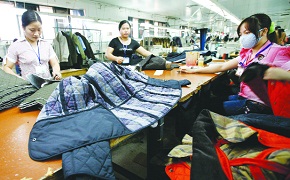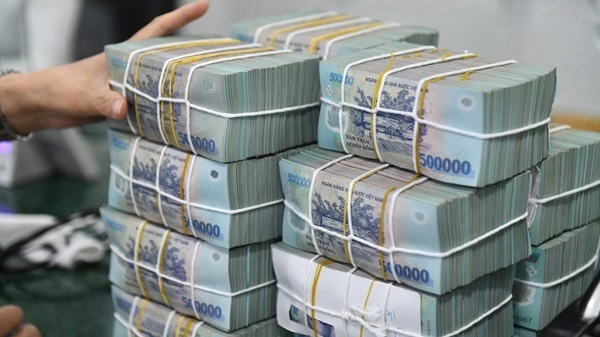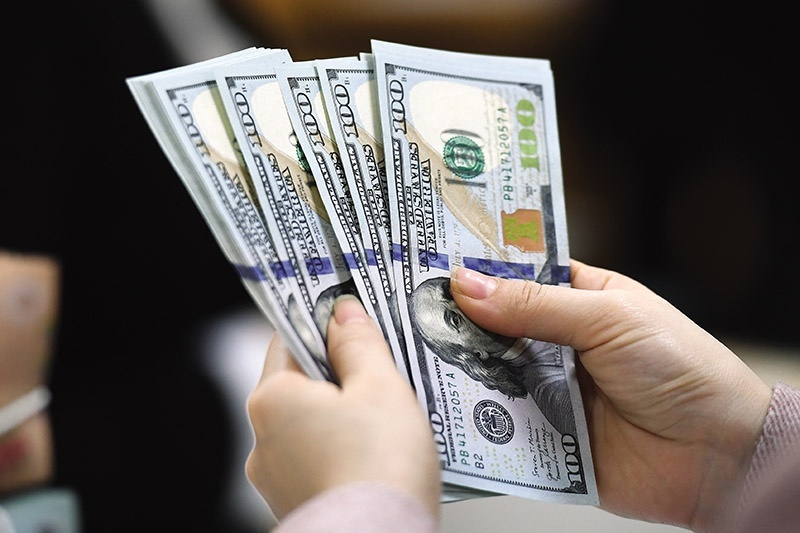Taking stock amid rapid success
On the occasion of the 15th anniversary of the Vietnam-United States normalised diplomatic relations, AmCham Vietnam’s governor and Baker & McKenzie LLP’s managing partner Fred Burke offers VIR’s Lien Huong some views about the changes in Vietnam’s business environment during the past decade which could attract more interest from US investors.
 Local firms are increasingly seeing the US as a realistic export market |
US investors are coming to Vietnam for the same reasons that investors from other parts of the world are coming here. These reasons break down into three main categories. First, there are those who would like to establish an export manufacturing base here to meet the needs of their global supply chains.
Often, these export-oriented manufacturers are choosing Vietnam as a supplement to their existing manufacturing in China or elsewhere in the region. The recent trend towards appreciation of the Chinese currency, coupled with ongoing improvements in Vietnam’s transportation infrastructure, is accelerating this source of new investment.
Second, there are portfolio investors, including especially the private equity funds and Vietnam investment funds, looking to contribute capital in the form of equity or, more recently bonds, with Vietnamese companies that have a bright future in this growing market.
Third, there are foreign investors in manufacturing and especially services who’d like to expand their global operations into Vietnam, again to participate in Vietnam’s economic growth opportunities.
Americans, who had been held back in the early 1990s by the lack of diplomatic relations (until 1995) and normal trade relations (2001), now see Vietnam as one of their priority areas when considering how to further expand their business in an otherwise lackluster global economy.
The success of high profile American companies, some of whom like ourselves, started here in the early 1990s, has encouraged them that Vietnam is a place where they can do well.
One of the areas that the US investors are interested in Vietnam is energy and electricity production. However, as compared to other investors, the number of US investors here in this field remained tiny with only some big names such as GE and AES. Which are the major obstacles hindering them from accelerating their business in Vietnam?
Power projects require large amounts of capital and long lead times. There is a high risk of failure in negotiations due to the lack of consensus on pricing and risk allocation. That means that private companies alone rarely find it prudent to pursue such projects and there have been enough failures to make new players think twice.
On the other hand, some European and Asian countries provide better government export credit support for their large infrastructure companies so that they can survive these long project development periods and provide the most competitive pricing for the services and equipment that goes into the projects.
However, we see some emerging success, such as a recently approved project in the natural gas area in the southern part of the country that will provide clean energy for millions of Vietnamese people and enterprises.
Electricity shortages are a headache for Vietnam. How are US firms reacting to the impacts to their businesses?
This summer, even those of us who have been in Vietnam for many years have been surprised by the severity of the power shortages. Last week our office in Hanoi, which is in a leading office tower owned by a major state-owned bank, was told that its power would be cut for two afternoons. Though the electricity company later found a way to keep the power running, it was only with considerable pleading on the tenants’ part.
For factory owners, such shut downs mean serious losses of productivity and that can cost jobs and hurt Vietnam’s competitiveness. Clearly, the situation needs more urgent attention. In addition, as a supplement to traditional power, more state support should be given to alternative energy sources, including solar and wind power (which will require feed in tariffs), and biofuels.
It seems that the major players in the power sector today, who control oil, coal and electricity distribution, are not keen on opening up to this kind of competition. But as the current American tragedy in the Gulf of Mexico teaches, traditional carbon-based energy sources have hidden costs to society that go well beyond the price of the fuel itself.
At the same time, while nuclear energy seems a promising long-term supplemental energy source for Vietnam, it too still suffers from very serious environmental and health issues in terms of storage of radioactive spent fuel.
No one, including the US firms, has an easy answer, and most likely solutions will need to be sought in each form of power, but moving towards a more market-oriented power price structure and introducing greater efficiencies and competitiveness in the distribution network would seem to be reasonably easy short term conditions to stimulating the capital investment that the sector needs.
Since early this year, there were intensive trips by high-ranking US trade officials and businesspeople to Vietnam. What is the meaning of these events to bilateral investment relations between the two nations and potential for the US’ investment in Vietnam?
These big company delegations are significant in signaling the keen desire that big US industry has to participate in Vietnam’s economic development, especially at a time when other economies are slow. But just as important are the hundreds of smaller companies, including many services companies, who are already working here to develop trade and investment projects.
Some of these are alternative energy companies who are trying to help Vietnam avoid the mistakes that the “developed” countries suffered in their early years of industrialsation.
There is already precedent in Vietnam to show that Vietnam might avoid some of the environmental damage suffered and then painfully remedied by the developed countries if it only just leapfrogs to the right energy solutions today. So the big bilateral delegations are just the tip of the iceberg in terms of the depth of interest and engagement that is developing between the two economies.
Vietnam is considered a potential market that helps the Obama administration realise its target to double exports in five years. How do you see the feasibility of this consideration?
Yes, the Obama administration has set out a target of doubling exports to ASEAN within the next five years. This is a very reasonable target considering the large and growing trade surplus that Vietnam now enjoys with the US ($15 billion in Vietnam exports vs. only $4 billion in imports estimated for 2010 by the US Commerce Department).
Over the long run, such structural trade deficits can become political problems, and US congressmen are already reacting to protectionist voices in the US by support dumping cases, technical barriers to trade and interference in labor and union matters in Vietnam.
Vietnam could open up its market to more American goods and services with relative ease to help preempt these voices and reap certain indirect benefits by doing so. For example, retail distribution is being jealously guarded to protect domestic supermarket chains, but allowing some “big box” retailers in from the US would help to reduce prices for consumers and create more efficient and competitive supply chains.
Such efficiencies can help keep the cost environment for exporters stable, so that Vietnam’s export competitiveness remains strong, so this could be a “win-win” situation with Vietnam’s exports growing even as the US exports to Vietnam grow more closely in tandem as well.
This would be healthier to the bilateral trade relationship over the long term than just arranging a few sales of big ticket items like airplanes to boost the US export figures in a given year.
It will take a lot of effort on both sides to keep the bilateral trade and investment relationship on a stable and growing course, and to resist protectionist pressures, but there seem to be enough people in Vietnam and the US who see the bigger picture and who are willing to work hard to stay the course.
What the stars mean:
★ Poor ★ ★ Promising ★★★ Good ★★★★ Very good ★★★★★ Exceptional
 Tag:
Tag:
Related Contents
Latest News
More News
- Vietnam’s stand-out tax outlook (January 02, 2025 | 16:18)
- Banks deliver bright profit picture (January 01, 2025 | 10:00)
- Forecast upbeat for banking industry in 2025 (December 27, 2024 | 16:22)
- Home Credit Vietnam: The answer is always with the customer (December 27, 2024 | 08:00)
- Targeted reform to aid stock market (December 24, 2024 | 22:00)
- No year-end easing of focus on business support and stability (December 24, 2024 | 20:00)
- Preventing downturn the nucleus of reform (December 24, 2024 | 18:00)
- Strict management needed for bank capital increases (December 24, 2024 | 16:34)
- Budding potential in green finance and AI (December 23, 2024 | 10:11)
- Accountants’ role in healthcare risk management (December 20, 2024 | 12:04)




















 Mobile Version
Mobile Version